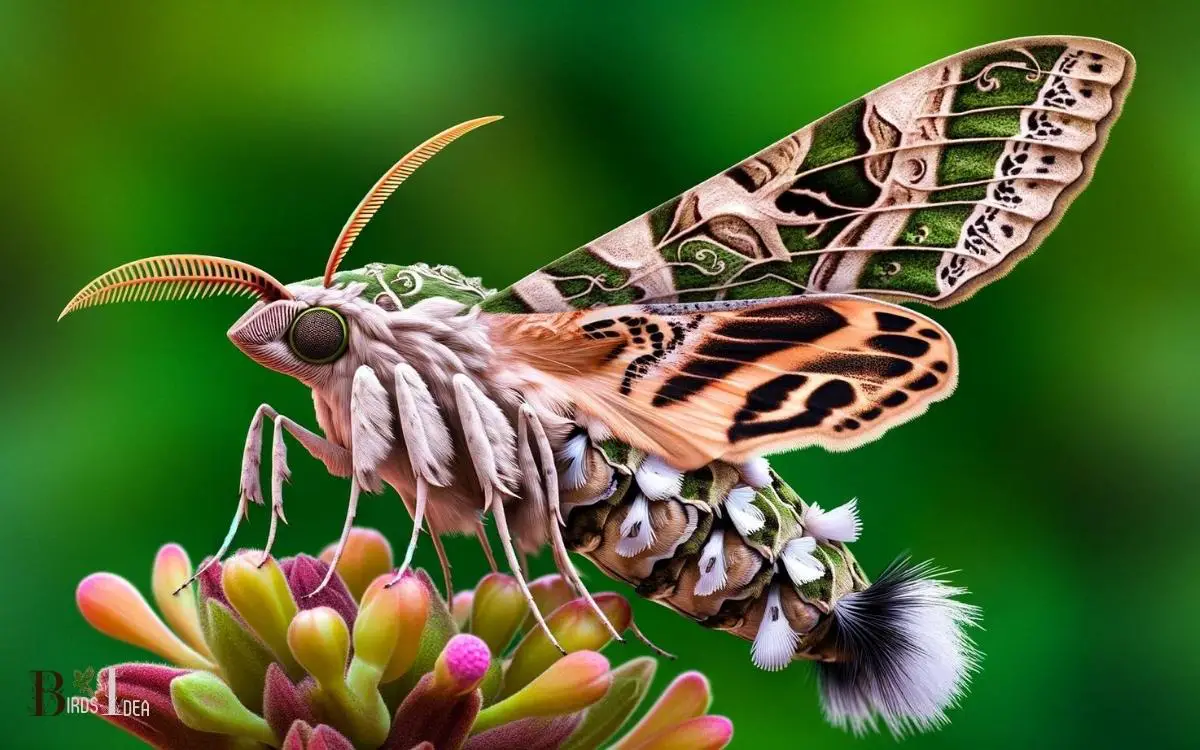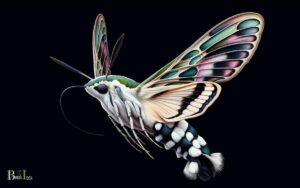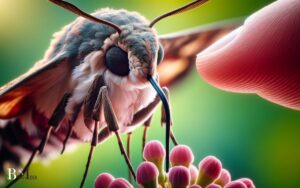Moth That Looks Like a Hummingbird: Discover!
The Hummingbird Moth, known scientifically as Hemaris thysbe, is an enthralling species often mistaken for a hummingbird due to its similar size, hovering flight pattern, and affinity for nectar-rich flowers.
These moths exhibit a rapid wingbeat and possess a long proboscis ideal for accessing nectar, contributing significantly to their ecosystem’s pollination process.
Found predominantly in North America, the Hummingbird Moth is a remarkable example of convergent evolution and plays an essential role in maintaining biodiversity.
The Hummingbird Moth, or Hemaris thysbe, is an insect with an uncanny resemblance to hummingbirds, not only in appearance but also in behavior.
Key characteristics include:
These attributes allow the Hummingbird Moth to blend into habitats where predators might overlook them, mistaking them for the less palatable hummingbird.
The Hummingbird Moth is a master of mimicry, blurring the line between bird and insect in its quest for nectar.

Key Takeaway
Hummingbird Moth vs. Common Hummingbird: An Intriguing Comparison
| Feature | Hummingbird Moth (Hemaris thysbe) | Common Hummingbird |
|---|---|---|
| Size | 1.5 to 2 inches in wingspan | 3 to 5 inches in length |
| Color | Olive green and burgundy | Various, often iridescent |
| Wingbeat Frequency | Up to 70 beats per second | Up to 80 beats per second |
| Feeding Mechanism | Long proboscis | Long tongue |
| Flight Pattern | Hovering and rapid flying | Hovering and rapid flying |
| Habitat | North America | Americas |
| Role in Pollination | Significant | Significant |
| Predation Avoidance | Mimics hummingbirds | Speed and agility |
Physical Resemblance to Hummingbirds
The moth often mistaken for a hummingbird due to its physical resemblance and behavior is the hummingbird hawk-moth (Macroglossum stellatarum).
This moth has a plump, furry body, similar to that of a hummingbird, and hovers in front of flowers while feeding, just like the avian species. Its wings beat rapidly, creating a humming sound, further adding to the confusion.
The wings are mostly transparent with a reddish-brown border, resembling the coloration of a hummingbird’s wings in flight.
The long proboscis of the hummingbird hawk-moth, used for feeding on nectar, closely resembles the beak of a hummingbird.
These physical similarities, combined with its behavior, often lead to misidentifications. However, a closer observation reveals the distinct antennae and the lack of legs, characteristic of moths, thus distinguishing it from its avian counterpart.
Unique Feeding Behavior
One behavior that sets the hummingbird hawk-moth apart is its ability to feed while in flight. This unique feeding behavior allows the moth to hover in front of a flower and extend its long proboscis to sip nectar, much like a hummingbird.
This remarkable adaptation enables the moth to access nectar from a wide variety of flowers, including those with long tubular shapes that other insects may not be able to reach.
The moth’s agile flight and precise hovering also allow it to outcompete other nectar-feeding insects for floral resources.
Additionally, the ability to feed in flight enables the moth to be an efficient pollinator as it moves from flower to flower.
This behavior showcases the incredible evolutionary adaptations that have allowed the hummingbird hawk-moth to thrive in diverse ecosystems.
Adaptations for Survival
Having evolved to feed in flight, the hummingbird hawk-moth has developed additional adaptations for survival that enable it to thrive in diverse ecosystems.
With its rapid wingbeats and hovering ability, this moth minimizes the risk of predation by agilely evading predators.
Its coloration, often resembling that of a hummingbird, serves as a form of protective mimicry, deterring potential threats.
The elongated proboscis enables the moth to access nectar from long tubular flowers, expanding its foraging options and reducing competition for resources.
Furthermore, the moth’s ability to adjust its metabolism allows it to withstand varying environmental conditions, ensuring its survival in different climates.
These adaptations collectively enhance the hummingbird hawk-moth’s capacity to thrive in a range of habitats, making it a highly successful and resilient species.
Geographic Distribution
Geographic distribution plays a crucial role in the habitats where the hummingbird hawk-moth can be found, influencing its adaptability and survival strategies.
The hummingbird hawk-moth can be found across various regions, including Europe, Asia, and parts of Africa.
Its distribution is influenced by factors such as climate, food availability, and suitable breeding grounds.
The moth’s ability to thrive in diverse environments showcases its adaptability to different geographical conditions.
Its presence in urban areas indicates a level of tolerance to human activity. However, its distribution also reflects the impact of habitat loss and climate change on its population.
Understanding the geographic distribution of the hummingbird hawk-moth is essential for conservation efforts and preserving its role in ecosystems.
The moth’s resilience in urban landscapes demonstrates its ability to coexist with human development. Its presence across continents highlights its adaptability and evolutionary success.
The impact of climate change on its distribution underscores the importance of environmental conservation efforts.
Habitat loss threatens the moth’s population in certain regions, emphasizing the need for conservation measures.
The moth’s distribution serves as a reminder of the interconnectedness of species and ecosystems.
Are Moths That Look Like Hummingbirds Related to Actual Hummingbirds?
Yes, moths that look like hummingbirds are known as hummingbird moths. Despite their similar appearance, they are not related to actual hummingbirds. Instead, they are part of the sphinx moth family. Discovering the hummingbird moth lifecycle unveils their transformation from caterpillar to adult moth, shedding light on their unique biology.
Importance in Pollination
The hummingbird hawk-moth’s role in pollination contributes to the ecosystem’s biodiversity and the reproduction of various plant species.
As it hovers and feeds on nectar from flowers, the moth inadvertently transfers pollen from one flower to another, aiding in the fertilization and production of seeds.
This process is crucial for the survival of many plant species and helps maintain the delicate balance of the ecosystem.
The table below illustrates the diverse plant species that benefit from the pollination activities of the hummingbird hawk-moth.
| Plant Species | Pollination Benefit |
|---|---|
| Lavender | Pollen transfer |
| Petunia | Fertilization aid |
| Honeysuckle | Seed production |
| Red Clover | Biodiversity support |
| Verbena | Ecosystem balance |
The hummingbird hawk-moth’s efficient pollination activities have far-reaching effects, ultimately contributing to the overall health and sustainability of the environment.
Conclusion
The moth that looks like a hummingbird is a remarkable example of convergent evolution, with its physical resemblance and unique feeding behavior.
Its adaptations for survival, including its geographic distribution, make it an important species in pollination.
The juxtaposition of this tiny moth mimicking the behavior of a larger bird evokes a sense of wonder and awe at the diversity of the natural world. Truly, nature never ceases to amaze.






